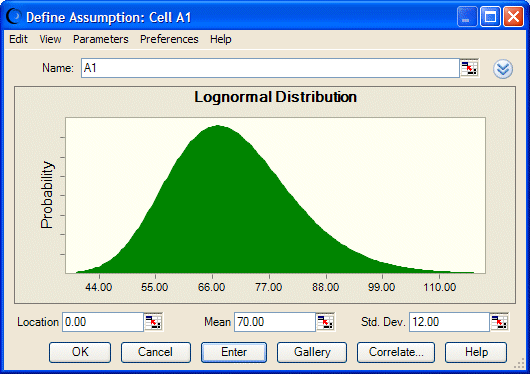Suppose you purchase a stock today at $50. You expect that the stock will be worth $70 at the end of the year. If the stock price drops at the end of the year, rather than appreciating, you know that the lowest value it can drop to is $0. On the other hand, the stock could end up with a price much higher than expected, thus implying no upper limit on the rate of return. In summary, the losses are limited to the original investment, but the gains are unlimited. Using historical data, you can determine that the standard deviation of the stock’s price is $12.
Figure 87, Lognormal Distribution shows a lognormal distribution with the mean parameter is set at $70.00 and the standard deviation set at $12.00. The default location is 0, which works for this example. This distribution shows the probability that the stock price will be $x.
